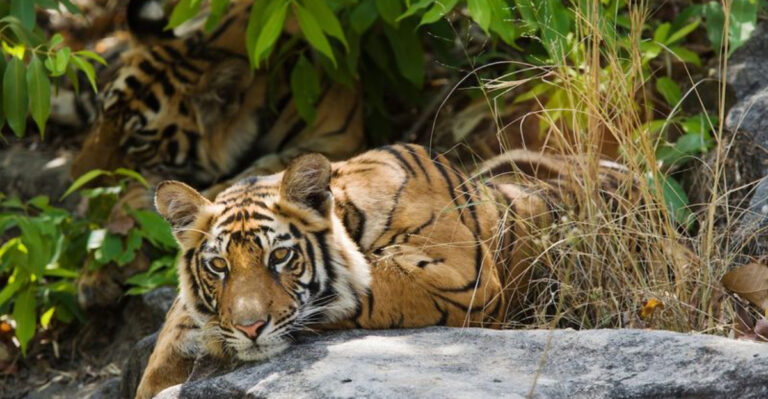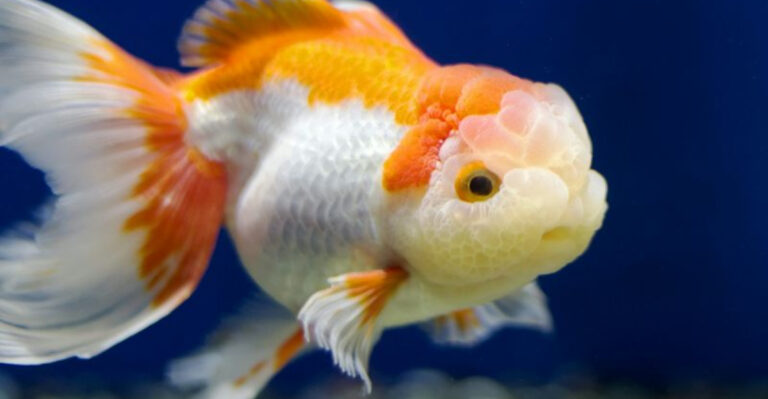15 Fascinating Ways Weaver Ants Build Their Nests
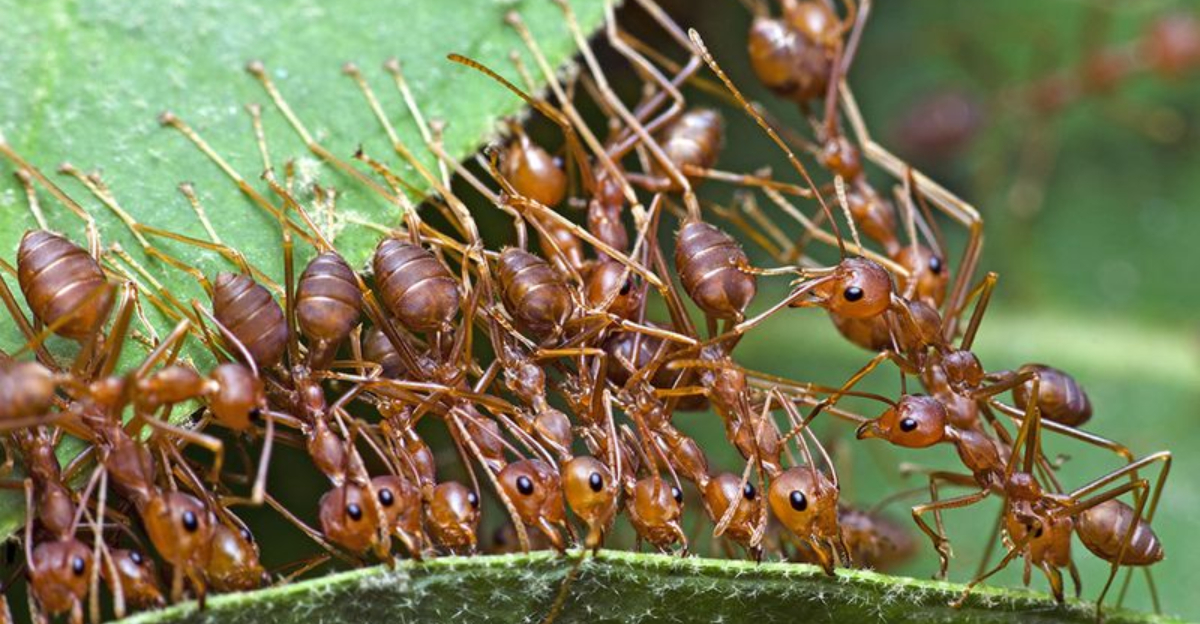
Weaver ants are nature’s master architects, creating incredible leaf nests high in the treetops of tropical forests.
These amazing insects work together in perfect harmony to build complex homes that protect their colonies from predators and weather. Their unique construction methods showcase some of the most impressive teamwork you’ll ever see in the insect world.
1. Ant “Weavers” Use Silk From Their Babies
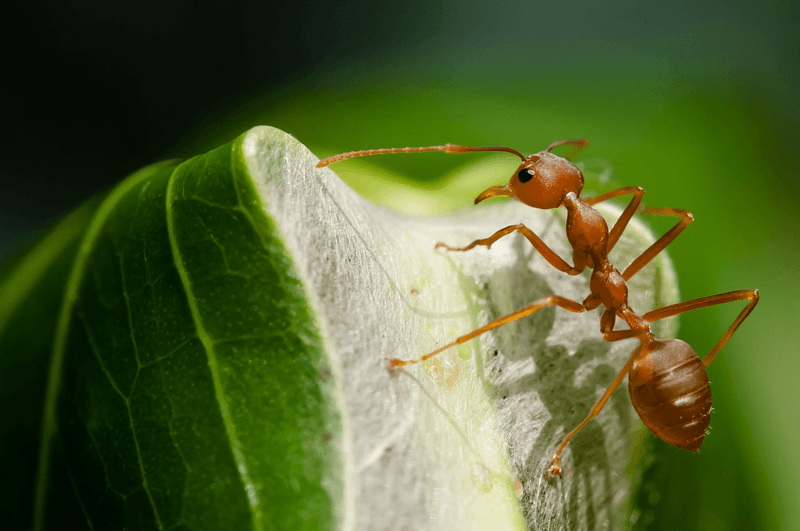
Worker ants perform a fascinating trick – they carry their own larvae like living glue guns! Gently holding the white, worm-like larvae between their mandibles, they press the baby’s head against leaf edges.
The larvae respond by secreting sticky silk threads from special glands in their mouths. This natural adhesive creates strong bonds between leaves that can withstand tropical storms.
This behavior represents one of nature’s most remarkable examples of tool use, as adult ants essentially use their own young as biological sewing machines.
2. Picking the Perfect Leaves for the Perfect Nest
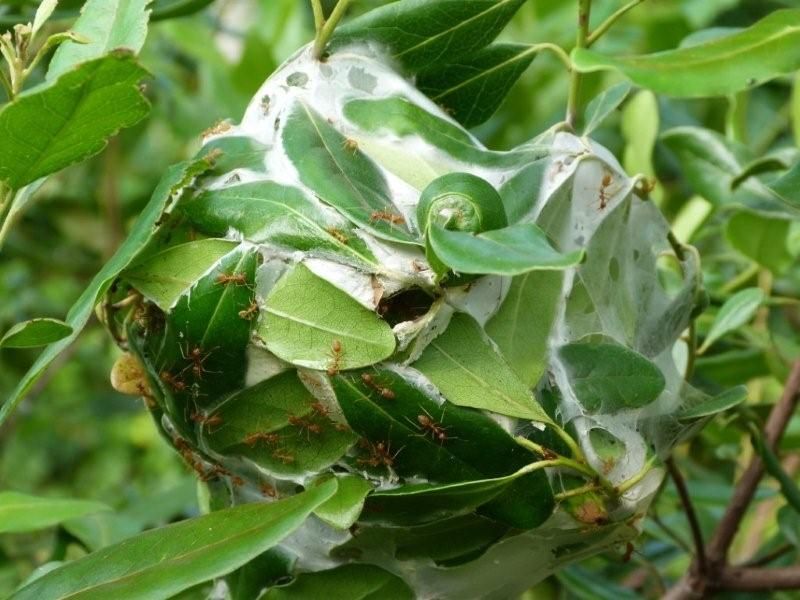
Weaver ants aren’t just grabbing any old leaves – they’re picky architects with specific requirements! They prefer flexible, broad leaves that bend without breaking, making construction easier and more durable.
Young leaves often get priority because they’re more pliable and easier to manipulate. The ants can detect subtle differences in leaf thickness and texture with their sensitive antennae.
Some colonies even show preferences for certain tree species, suggesting they can identify which leaves will create the strongest, most weather-resistant homes.
3. High-Up Homes: Why Weaver Ants Love Tree Canopies
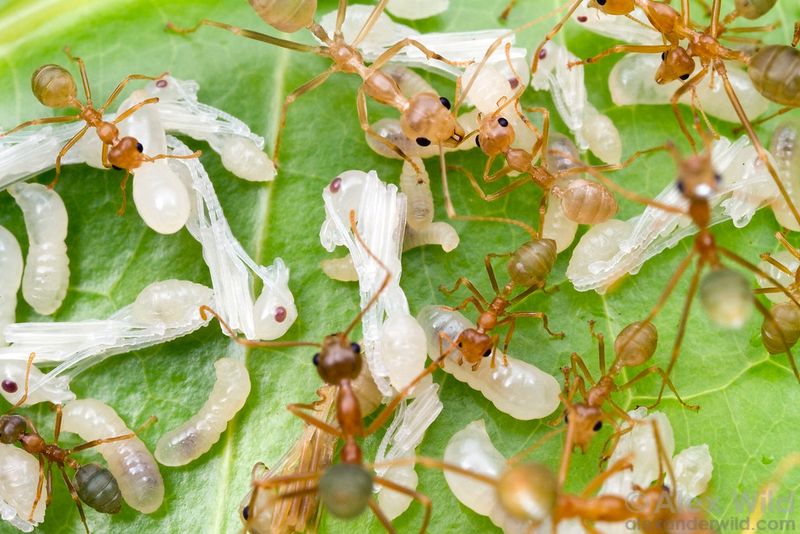
The upper reaches of trees offer weaver ants premium real estate for good reasons. Higher elevations protect colonies from ground predators like reptiles and other ant species that can’t climb as effectively.
Canopy environments also provide better airflow, reducing humidity and preventing fungal growth that could harm the colony. Sunlight exposure in these locations helps regulate nest temperature for optimal brood development.
Additionally, building high up puts them closer to their primary food sources – plant nectar, fruit, and the insects that feed on leaves.
4. How Weaver Ants Turn Leaves Into Homes
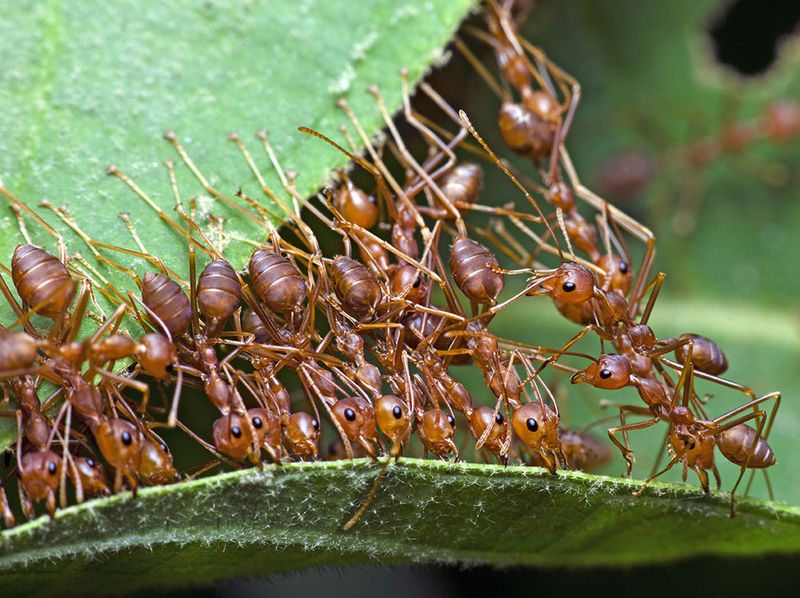
The transformation begins when scout ants discover the perfect leaf. Workers gather around the edges, using their strong jaws to pull neighboring leaves closer together.
What follows is a remarkable construction process where hundreds of ants work simultaneously. The leaf edges are carefully aligned and joined to create protective chambers and tunnels.
Within hours, what was once separate foliage becomes an interconnected structure that will house thousands of colony members, eggs, and developing young.
5. Hanging Homes: Weaver Ant Nests in the Air
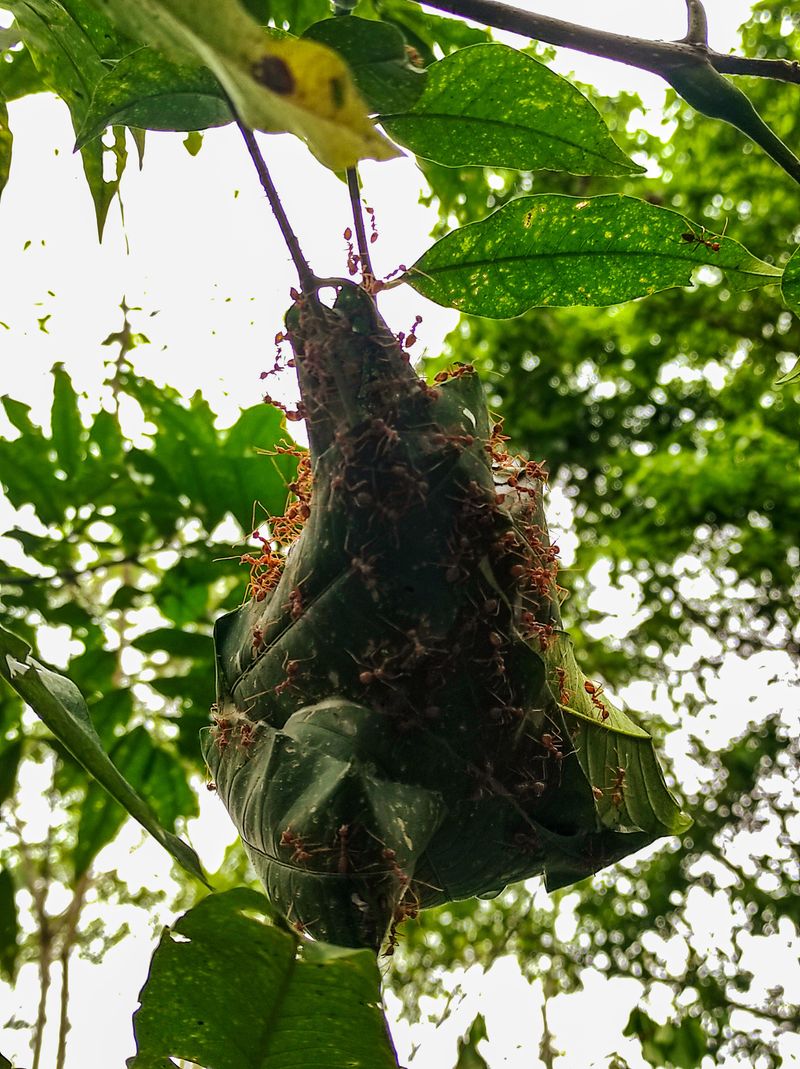
Some of the most impressive weaver ant structures hang suspended between branches like natural hammocks. These aerial constructions start with ants forming living chains, dangling from one branch to reach another.
Once the gap is bridged, more workers reinforce the connection with silk and additional ant chains. The final result resembles a hanging garden of leaves, providing unique protection from climbing predators.
These suspended nests can sway in the wind, making them harder targets for predatory birds while still maintaining structural integrity thanks to flexible silk connections.
6. Chain Reactions: Ants Link Up to Hold Leaves Together
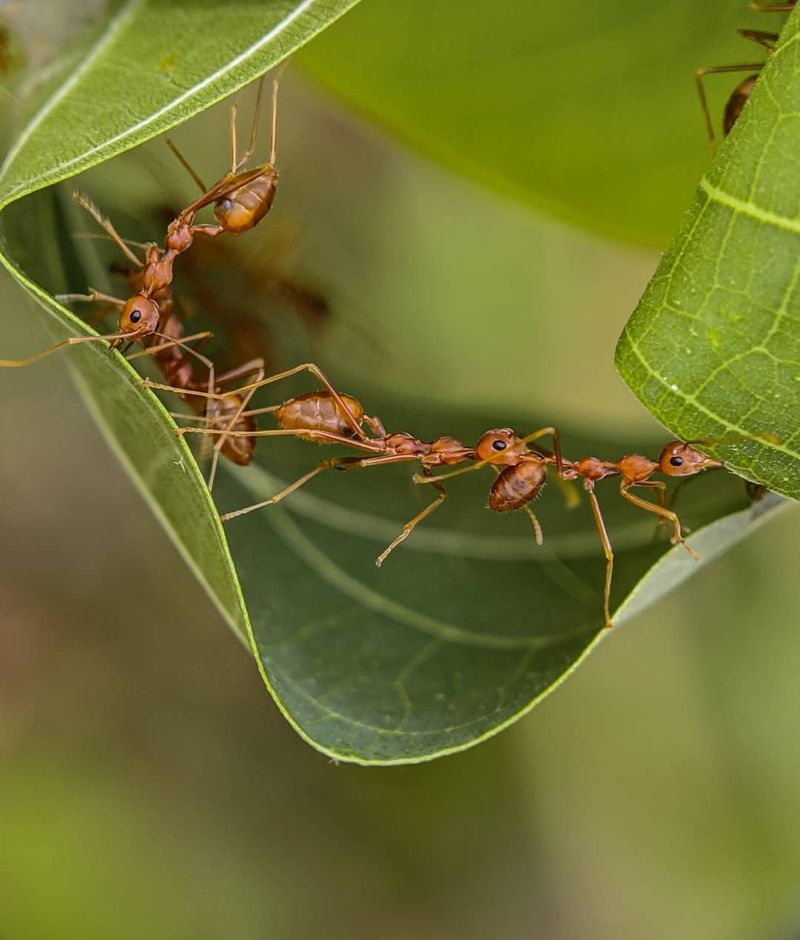
When faced with leaves too far apart to join directly, weaver ants create remarkable living bridges with their own bodies. Workers lock legs and mandibles together, forming chains that can stretch several inches.
These ant chains contract like muscles, gradually pulling distant leaves closer until they touch. Sometimes hundreds of ants participate in these chains, demonstrating extraordinary collective strength.
The most impressive part? They can maintain these positions for hours while other workers secure the leaves with silk, showing incredible physical endurance for creatures so small.
7. The Queen’s Secret Role in Nest Building
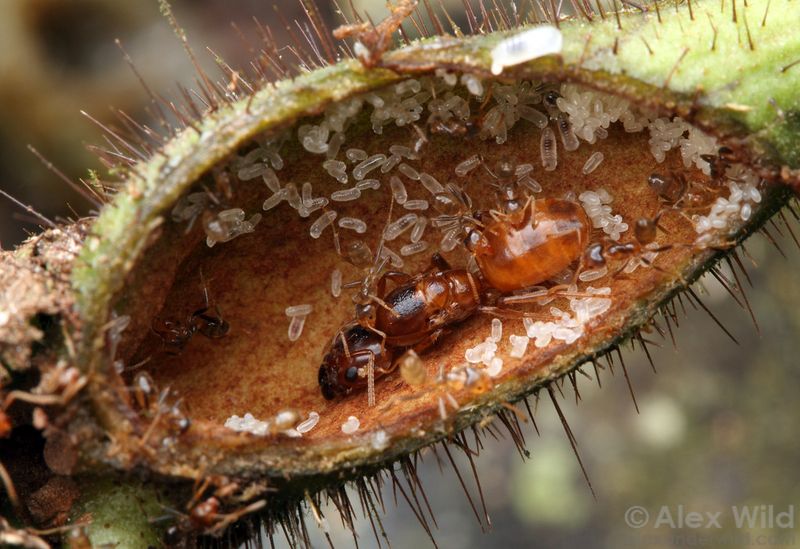
While worker ants do the heavy lifting, the queen plays a crucial behind-the-scenes role in nest construction. Her pheromones act as chemical blueprints, guiding where new chambers should be built and how large they should become.
The royal chamber always occupies the most protected central position in the nest. Here, specialized workers create walls of exceptional thickness and complexity.
As the colony grows, the queen’s changing pheromone signals trigger expansions and renovations, ensuring the nest evolves to meet the population’s needs – she’s essentially the colony’s living architect!
8. Shaping and Holding: Ants Get Handy with Their Mandibles
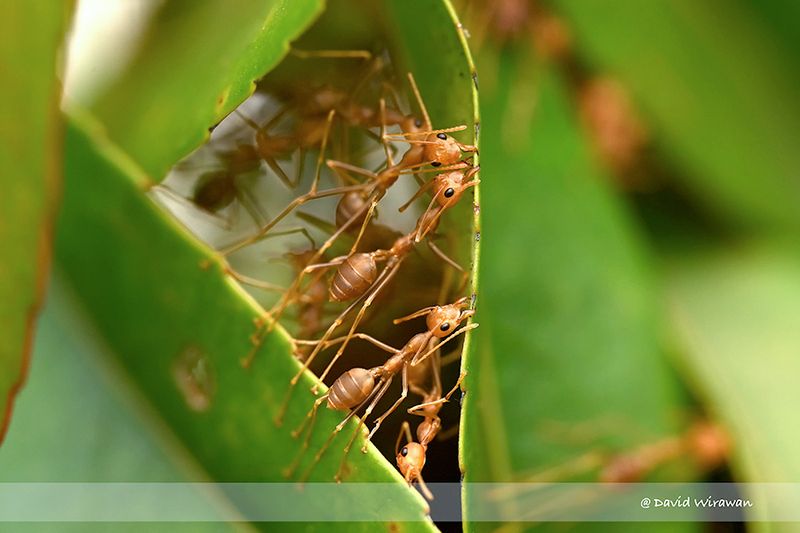
A weaver ant’s mandibles are like Swiss Army knives – versatile tools perfect for construction work. These powerful jaws can exert pressure up to 300 times the ant’s body weight when clamping leaves together!
Workers use mandibles to cut precise notches in leaves, creating fold lines that help shape the nest’s contours. The tiny serrations on their jaw edges provide perfect grip when holding leaves steady during silk application.
Some specialized workers even have slightly different mandible shapes optimized for specific building tasks, showing nature’s incredible adaptation for architectural efficiency.
9. Larvae as Ant “Silk Machines” for Nest Building
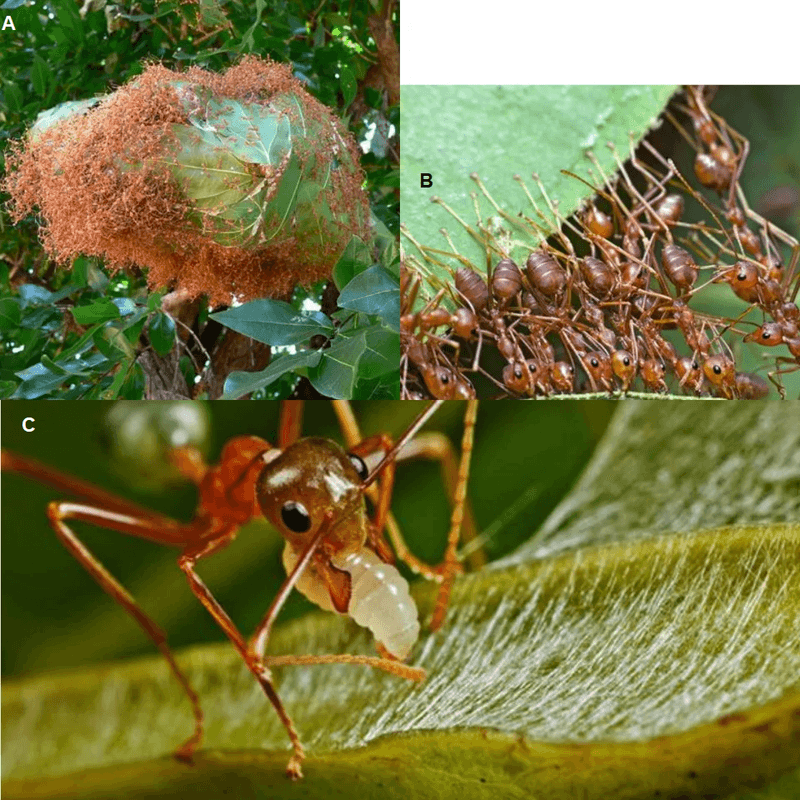
Weaver ant larvae produce silk that’s remarkably similar to spider silk in strength and flexibility. Each larva can generate several centimeters of this sticky thread, which hardens upon exposure to air.
The silk-producing glands develop early in larval life, specifically evolved for nest construction rather than cocoon building like most other silk-producing insects. The consistency changes depending on humidity and temperature, adapting to environmental conditions.
Remarkably, workers can somehow communicate with larvae to control when and how much silk they produce – a biological marvel not fully understood by scientists.
10. Crafting Safe Havens: How Ants Defend Their Nests
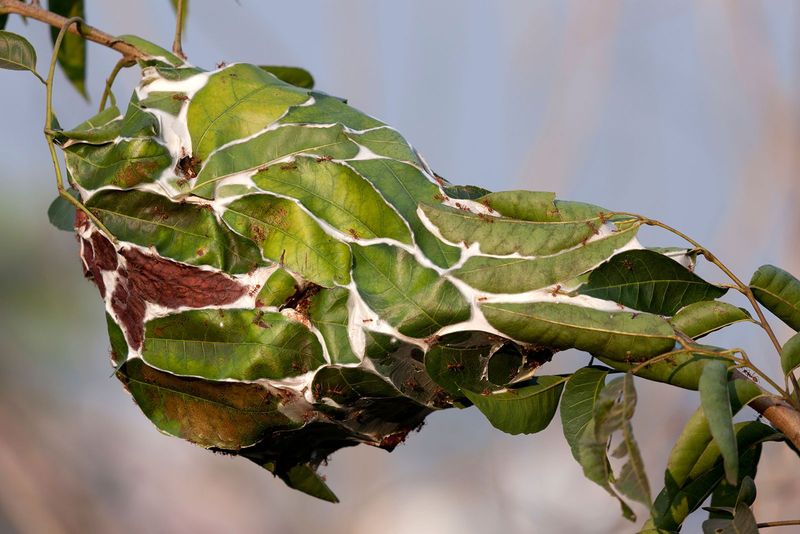
Weaver ants incorporate clever defensive features directly into their architecture. Narrow, maze-like entrances confuse potential invaders while allowing defenders to bottleneck attacks at strategic points.
The outer leaves often contain special chambers housing soldier ants ready to respond to threats. Some nests even include decoy entrances that lead to dead ends or chambers filled with aggressive defenders.
The silk-reinforced walls themselves provide protection, as they’re difficult for predators to tear open and can even resist light rain and wind that would destroy other insect homes.
11. Moving to Greener Pastures: Ants Relocate Their Nests
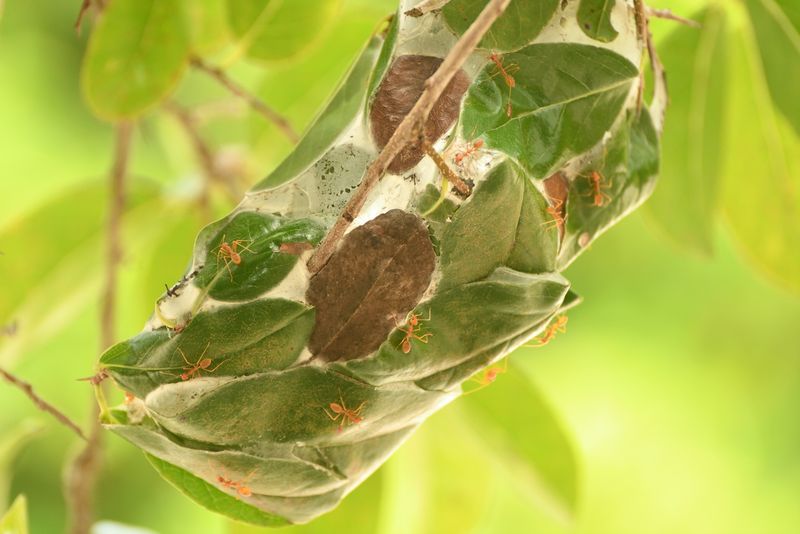
When conditions become unfavorable, weaver ants perform the remarkable feat of relocating their entire colony. The process begins with scouts finding suitable new locations, then marking trails with pheromones.
Workers dismantle parts of the old nest, salvaging silk and carrying larvae to the new site. The queen is carefully transported, surrounded by a protective ball of workers.
Construction teams simultaneously begin building at the new location, creating temporary shelters that gradually expand into a full nest – all while maintaining colony functions without interruption!
12. The Pheromone Dance: Ants Communicate Nest Plans
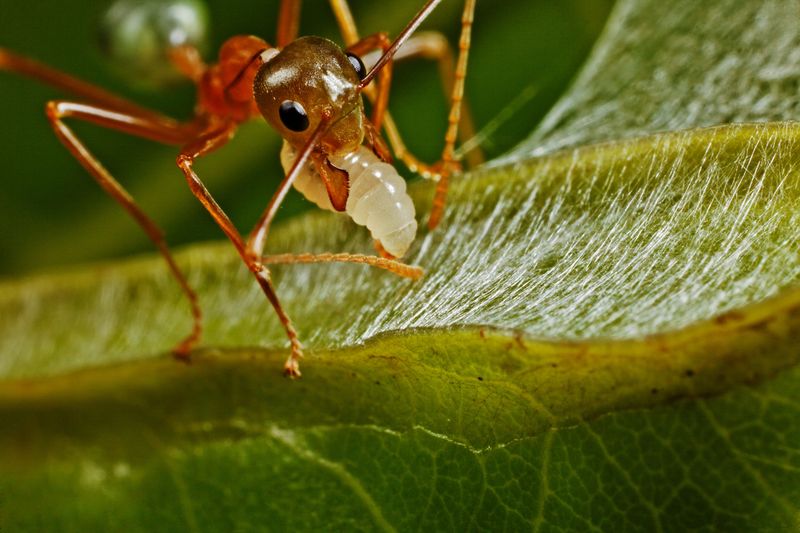
Before a single leaf is moved, weaver ants engage in complex chemical conversations. Specialized scouts release pheromones that essentially mark out a three-dimensional blueprint for the colony.
Different chemical signals indicate where chambers should be built, how large they should be, and which areas need reinforcement. Workers respond to these invisible instructions, following the chemical trail map with remarkable precision.
The concentration of pheromones even indicates priority – stronger scents direct more workers to focus on critical areas first, creating an efficient construction management system.
13. Never Settling: How Weaver Ants Keep Their Nests Growing
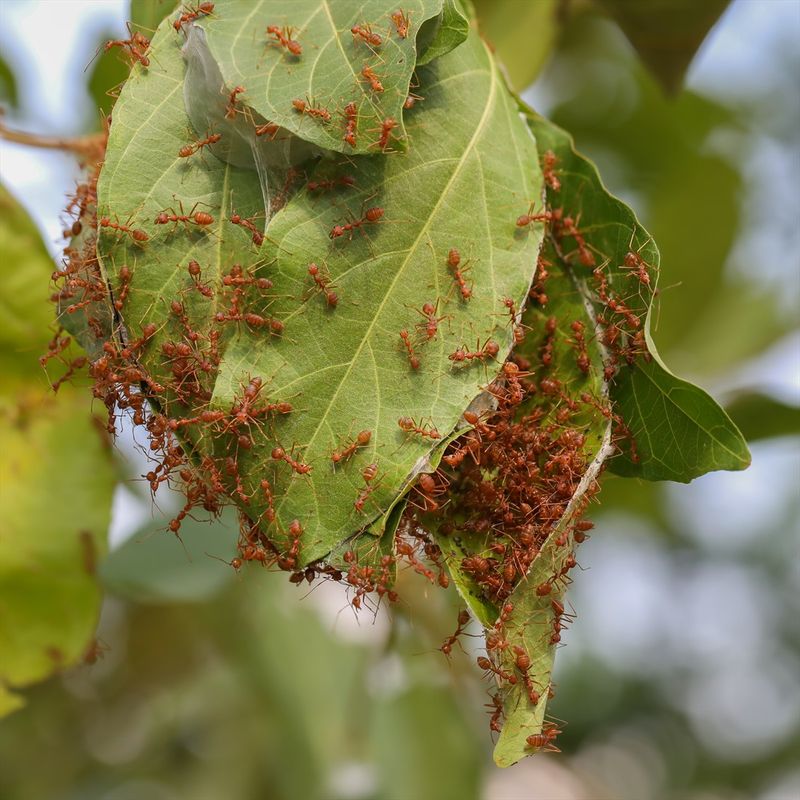
A weaver ant colony never considers construction complete. Continuous expansion happens as specialized assessment teams regularly inspect the structure for weaknesses or opportunities to improve.
Fresh leaves are incorporated as older ones begin to deteriorate, maintaining structural integrity. During population booms, new chambers are rapidly added to accommodate the growing numbers.
Even weather patterns trigger architectural responses – more waterproof sections develop during rainy seasons, while ventilation improves during hot periods, demonstrating remarkable adaptation to changing environmental conditions.
14. Adapting to Nature: Weaver Ants Change Their Nest Designs
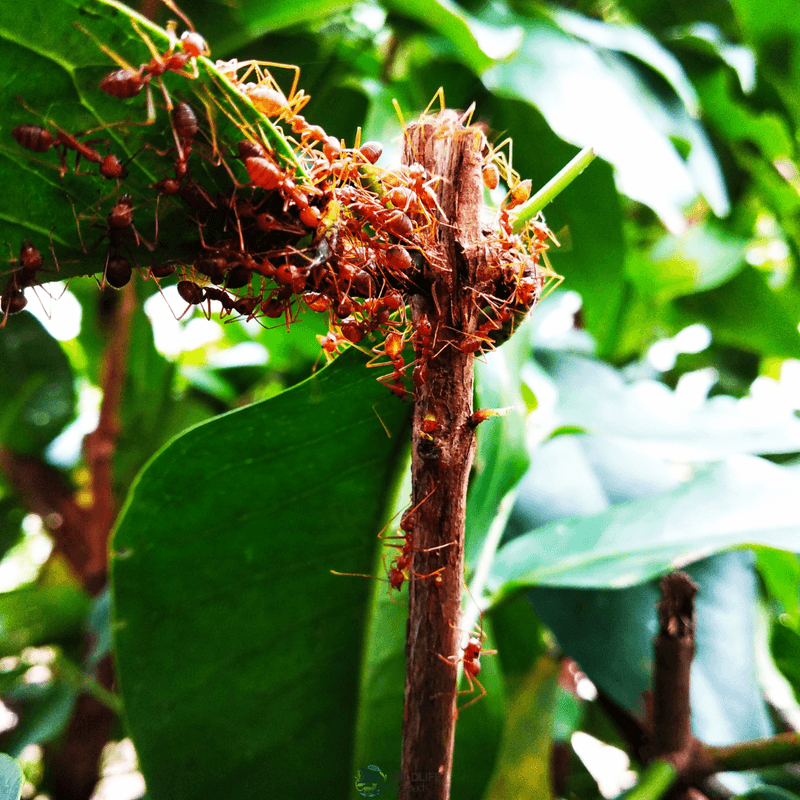
Weaver ant architects show impressive flexibility, modifying designs based on available materials and environmental challenges. In areas with frequent storms, nests feature stronger reinforcement at anchor points and more internal chambers for protection.
During dry seasons, ants create more ventilated structures with additional openings for airflow. Some colonies even construct water-resistant outer layers using leaves with natural wax coatings.
Regional variations exist too – nests in different forests show distinct architectural styles adapted to local tree species and predator threats!
15. Inside a Weaver Ant Nest: What’s Really Going On?
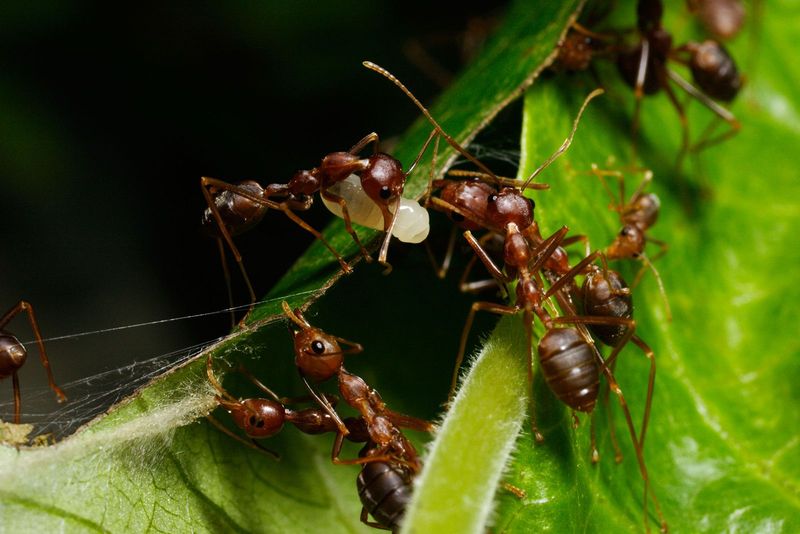
The interior of a weaver ant nest reveals sophisticated organization that rivals human architecture. Different chambers serve specific functions – nurseries for larvae, food storage areas, and even ‘waste management’ sections located far from living quarters.
Temperature-controlled rooms maintain ideal conditions for developing young. The queen occupies a specially constructed central chamber with thicker walls and multiple escape routes.
Corridors connecting chambers vary in width based on traffic patterns, with major thoroughfares wide enough for multiple ants to pass while carrying food or materials – truly a marvel of insect engineering!


